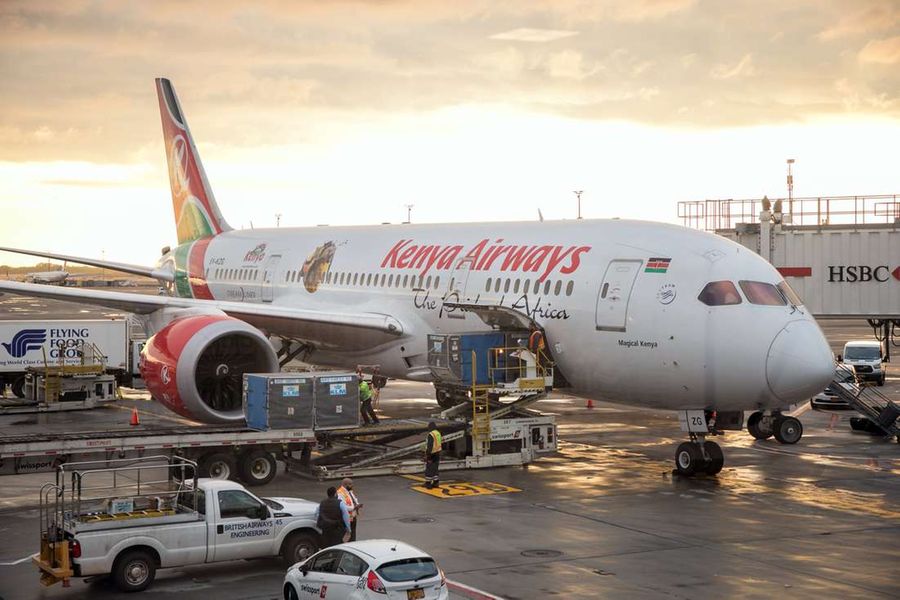Prime
Airlines body sets steep targets amid challenges

Participants follow proceedings at the Airlines Conference for Southern Conference in Western Cape, South Africa on October 15. PHOTO/ COURTESY/ EMMANUEL MUTAIZIBWA
What you need to know:
- Top decision-makers in the sector used a three-day conference in South Africa to engage in self-introspection and find ways to fix the leakages across the airlines industry.
The rains beat a gentle rhythm at the well-manicured lawn at Arabella Hotel and Spa located in the heartland of the Kogelberg Biosphere in the Western Cape.
Chosen as the venue for the Airlines Conference for Southern Conference, the industry captains perhaps sought the perfect blend— luxury and an idyllic setting to seek new ambitions— two years after the Covid-19 pandemic placed the airlines industry in a chokehold.
Yet there is a glimmer of hope that the industry can recover from this slump and grow by leaps and bounds. Amongst the participants were Boeing, Airbus, Embraer, Airlink Airlines, Royce Rolls, among others.
Double whammy
With economies stuck in a tailspin as a result of high global fuel prices—with no end in sight of the Ukraine conflict—the airlines industry must be cautiously optimistic that Africa can grow its passenger numbers beyond the paltry 1.9 percent of the global market share.
This requires grit and smart decisions anchored on government support to the vital airlines industry, which is a major cog of the tourism industry.
The other players—including the banking, infrastructure and tourism sectors—must work in silos to give the airlines industry the impetus to lift off into the skies without much turbulence, industry experts opined.
To the decision-makers, the three-day conference that ran from October 13 to October 15, served as a retreat to engage in self-introspection and to fix the leakages across the airlines industry. But beyond the colourful speeches and metaphors, these lofty dreams can only be achieved through hard work and a progressive approach by the airlines in Southern Africa to improve their services, network, open new routes as this will lead to exponential growth in passenger numbers.
Speaking at the conference, Lindiwe Sisulu—the South African Tourism minister—revealed that the travel and tourism industry was nearly decimated by the Covid-19 pandemic. The South African government, however, implemented various relief measures.
“The recovery plan interventions included, among others, the development and implementation of globally benchmarked standards to build traveller confidence, support for the protection of core tourism infrastructure, and stimulating demand through various campaign and marketing programmes to reignite domestic and international demand,” Ms Sisulu said.
Pandemic blow
Tourism arrivals in South Africa dropped sharply to 2.8 million people in 2020 and to 2.5 million visitors in 2021, way below the peak of 10.2 million in 2019 before the Covid-19 pandemic brought travel to a shuddering halt.
There is, nonetheless, a sliver of hope as South Africa’s tourism sector is heading to the peak.
According to the statistics for October 2022, both domestic and international tourism numbers exponentially grew as foreign visitors hit 3.3 million—an increment of 165 percent compared to the same period in 2021. Most of the visitors were from African countries, at 75 percent, while 15 percent travelled from Europe.
Ms Sisulu said there is an urgent need for crisis management in the travel and tourism sector, including the provision of resources to support response measures given the frequency of natural disasters, pandemics and the crises that pushed the global economy into a tailspin.
Aaron Munetsi, the chief executive officer of the Association of Airlines of Southern Airlines, said before the pandemic, African aviation traffic represented about 2.5 percent of world traffic. By 2021, the contribution dropped to a paltry 1.8 percent.
The Russia-Ukraine crisis has thrown a new challenge, impacting the pace of the industry’s recovery as the steep prices in fuel rose from $78 (about Shs293,000) a barrel in 2021 to the peak of $142 (about Shs534,000) a barrel. As a result, airlines across Africa made an astronomical loss of $8.6 billion during the pandemic, which wiped off nearly 49.8 percent of revenues in 2019.
Connectivity blues
Connectivity on the continent remains another sticky issue. About 22 percent of Africans travelling between two African cities are forced to travel through non-African hubs either in Europe or the Middle East. Mr Munetsi reckons “the situation can be reversed only through networks and schedules coordination at African hubs.”
Connectivity is intricately aligned to trade, business development and tourism. Owing to this, intra-Africa trade stands at a modest 18 percent compared to Europe at 64 percent, and Asia that is slightly above 50 percent.
Before the pandemic barrelled across the globe, the average GDP per capita in Europe was €30,000 (Shs130m). In Africa, the statistics are grim as 25 African countries had a per capita income of less than $1,000 (Shs3.8m), while only eight had a per capita income of more than $5,000 (Shs19m). Without a robust middle-class, air travel and intra-Africa traffic will remain in doldrums.
There is hope that the African Continental Free Trade Area will provide the impetus to improve intra-Africa trade as new air traffic routes will emerge to serve demand and connectivity will improve.
“While some thought fortune favoured the bold, we have been reminded that actually, fortune favours those who are prepared, focused, responsive, agile, resilient and determined,” Mr Munetsi said, adding, “These must be the new compass points by which we navigate a path to sustainability in its broadest and truest sense.”
Conservation drive
Thanks to the triumph of conservation efforts, the park is home to one of the largest populations of white rhinos in the world. It is set high up on a ridge, offering a spectacular panoramic view.
The reserve is home to a variety of species, including the cheetah, elephant, giraffe, lion and buffalo. With lush surroundings, guests can enjoy bird watching and views of the scenic African plains.
Early morning and late afternoon game drives are included and guided game walks may be arranged on request. We were lucky to see a lioness taking a nap on a tree after a meal.
On our way back to Durban, we passed by St Lucia at the world-renowned iSimangaliso Wetland Park. Previously known as the St Lucia Estuary and Wetlands Park, iSimangaliso is a World Heritage Site that stretches all the way from Kosi Bay in the north to Cape St Lucia in the south, on the Elephant Coast.
Portions of this area have been a game reserve since as early as 1895. The little town of St Lucia serves as tourist hub for the park and has grown substantially from the sleepy little village, perched below a canopy of trees, to the feeder town that is geared for domestic eco-tourism today.
As the doorway to a world of fresh water pans, lakes, mangrove and reed swamps, marshy grasslands, coastal dunes and an abundance of wildlife, the town is a two-hour drive from Durban. Life here is rather laid back and peaceful, if the monkeys and little duikers and hippos that roam the streets freely are anything to go by, and it serves as an ideal stopover before heading on towards the more remote areas of the Elephant Coast. St Lucia’s popularity with anglers is self-evident – seafood restaurants are numerous, and bait and tackle shops are anything but thin on the ground.
It also consists of the Greater St Lucia Wetland Park, South Africa’s third largest park.
On the north-eastern coast of KwaZulu Natal, this wilderness reserve stretches across 280kms of coastline from Kozi Bay in the north to Cape St Lucia in the south and was the first park in South Africa to be declared a World Heritage Site by Unesco in 1999.
The park includes Lake St Lucia and its estuary, a surround of wildlife reserve, a number of islands and a section of the Marine Reserve along the coast.
It is home to five recognisable ecosystems and includes swamps, lake systems, coral reefs, beaches, wetlands, woodlands and coastal forests.
The Great St Lucia Wetland Park embraces the country’s largest population of hippos and crocodiles. It is also home to leatherback turtles, black rhino, leopards, over 530 species of birds, including greater and lesser flamingos, and some 36 species of amphibians.
Durban is emerging out of floods that ravaged the city in April, leaving a trail of death and destruction. However, the resilience of its people to cope after the catastrophe, offers hope in the place of trepidation.
South Africa sights, sounds
At the end of the conference, there were a lot of spectacular sights to showcase the rainbow nation’s tourism potential. This reporter visited the Benguela Cove Lagoon Wine Estate buried in the plain hills and blue lakes of Western Cape, a plush residential wine house, which has an olive and lavender farm vineyard.
It also has an art gallery as its walls are adorned with the finesse of South African artistes, offering a rich tapestry of the country’s culture and heritage.
Driving back to Cape Town away from Kleinmond, a coastal village with sleepy rhythms, the velvet dark envelopes the mountains and as we begin to descend, the sun pokes the landscape as the fresh breath of air from the windswept ocean city filters across.
Once in Cape Town, one can visit the colourful houses of Bo Kaap at the Cape of Good Hope, ride a cable car across Table Mountain, embark on a scenic drive along Chapman’s Peak, and visit the penguin colony of Boulder’s Beach.
Alternatively, one can sail out to Robben Island and tour the prison where South Africa’s iconic president Nelson Mandela was confined for 18 of his 27 prison years.
Durban in Kwazulu Natal Province is another tourism gem in South Africa, which is a two-hour flight from Cape Town. The home to the great Zulu kingdom and heritage, its green landscape is dotted with boulevards of eucalyptus trees and as you drive towards the countryside it bears a striking resemblance with the villages across Uganda.
Rhino Ridge Safari Lodge is situated on the western boundary of the Hluhluwe iMfolozi Park, which is a four-hour drive from Durban City.
The lodge is set on Africa’s oldest proclaimed game reserve with 96,000 hectare park.




